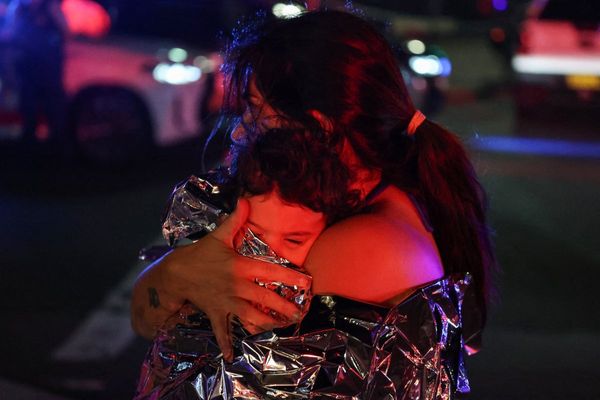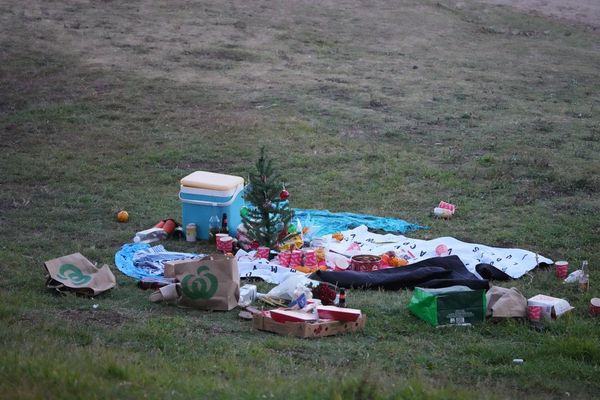Kim Tak-un was four years old when he was adopted by a Swedish family in 1974. Originally from South Korea, Tak-un had lived with his single father, a labourer who moved frequently for work. One day in the summer of 1974, while staying with his aunt, Tak-un wandered outside and disappeared.
Local police considered him abandoned and referred him to an adoption agency, which arranged his adoption to Sweden within five months. When his father realised his son was missing, he searched everywhere, only to discover – too late – that Tak-un had already been sent overseas. Devastated, he demanded Tak-un’s return. When the adoption agency failed to respond, he went public with the story.
In March 2025, South Korea’s Truth and Reconciliation Commission released initial findings from its investigation into the country’s 72-year-old international adoption programme. The full report is expected in the next few weeks as the investigation is now completed.
Based on more than 360 cases submitted by Korean adoptees from 11 countries, the commission uncovered widespread human rights violations, including falsified documents, lack of parental consent, and cases of child switching – shaking up adoptees and their families.
Get your news from actual experts, straight to your inbox. Sign up to our daily newsletter to receive all The Conversation UK’s latest coverage of news and research, from politics and business to the arts and sciences.
Since the end of the Korean War (1950–1953), South Korea has sent over 200,000 children abroad, becoming the world’s largest country for adoption, even as it grew into an advanced economy.
Existing studies have shown that international adoption from South Korea began as a response to the large number of mixed-heritage children born to Korean mothers and US soldiers during the war.
It is estimated that thousands of such children were born, and South Korea’s first president, Syngman Rhee, ordered their overseas placement on the grounds that they were “unfit” for a nation imagined as ethnically homogeneous.
However, international adoption did not end once this perceived “emergency” was over. From the mid-1960s onward, it expanded to include children from other vulnerable backgrounds, including those affected by poverty, family breakdown, and out-of-wedlock births. This, and the role of international adoption, is explored in my upcoming book.
This was closely tied to the policies pursued by South Korea’s military regimes. The most important figure was Park Chung Hee, a military general who came to power through a 1961 coup and ruled until his assassination in 1979.
His regime prioritised rapid economic growth, relegating social welfare to the lowest priority. Childcare was treated as an individual, not a state, responsibility. As I point out in my earlier research, public systems to categorise and care for children – whether abandoned, lost, or runaway – were extremely limited, and authorities largely placed the burden on parents to retrieve their separated children. This is probably why, after only cursory checks, authorities referred Tak-un to an adoption agency.
Tak-un’s case attracted media attention in Sweden as well. However, in an interview with Swedish newspaper Dagens Nyheter, the Swedish national board of health and welfare – which oversaw the Korean adoption programme – dismissed the claims, stating they were “99 percent certain” the story was false and insisting that Korean social workers had followed proper procedures.
The trust that Swedish authorities placed in South Korean adoption procedures may have been because of the way the Korean social workers presented their work. As the first generation of Koreans trained in US-style professional social work, they framed international adoption as being about the child, the importance of a family, and emotional wellbeing.
The research for my upcoming book shows that while they may have genuinely believed in international adoption as a valid form of child welfare, there were also practical reasons why this happened. With virtually no public funding for child welfare, many saw international adoption – where adoptive parents covered the costs of care – as an ideal way to apply their training.
In interviews with me, now-retired social workers acknowledged flaws in South Korea’s broader child welfare system, such as the inability to verify a child’s true status. Yet, without public resources to build a reliable system or prioritise family reunification, they often treated international adoption as a first, rather than a last, resort.
Moreover, the prevailing belief at the time that “normal” middle-class families offered the most stable environment for a child’s development provided further moral justification for sending children abroad.
Western authorities often interpreted Korean social workers’ professionalism as evidence of shared liberal child welfare values and placed strong trust in their procedures. When serious flaws surfaced – as in Tak-un’s case – they were frequently dismissed as exceptions rather than signs of deeper systemic problems.
Even when the facts were confirmed in 1975, Swedish authorities still refused to return the child. The Swedish consul-general in Seoul at the time, Lars Berg, argued that it was in Tak-un’s “best interest” to remain in Sweden, rather than be sent back to “an uncertain fate of the father without work and residence”.
This reflected, in part, Sweden’s domestic realities: like many western societies at the time, Sweden faced a shortage of adoptable children, and international adoption had become an important way to meet the wishes of prospective parents.
In the early 1970s, nearly half of all internationally adopted children arriving in Sweden came from South Korea. Which meant that when issues like Tak-un’s emerged, Swedish authorities prioritised the rights of adoptive parents, framing their defence in the language of child welfare.
Sweden’s Adoption Commission has just released its own report on June 2, examining the country’s international adoption practices, including those involving South Korea. Echoing my research findings, it recommended an end to allowing Swedes to adopt children from abroad.
So, what became of Tak-un? Ultimately, South Korean officials acquiesced to the Swedish authorities, and the Korean adoption agency was cleared of any wrongdoing. Tak-un never returned. The last trace in the archives is his birth father’s plea to hear from him.
I located Tak-un, who now goes by his Swedish name and lives in a small town in Sweden. Despite attempts to reach him, he didn’t respond. It remains uncertain whether his father’s message ever reached him or if he knows anything about his early life in Korea.
This silence is not merely personal. A system that claimed to act for the child’s welfare instead routinely erased adopted children’s pasts, ignored their birth families and decided their futures for them. Tak-un’s story isn’t just a painful exception – it is a haunting reminder of what was lost in the name of care.
This project has been supported by funding from the DAAD (German Academic Exchange Service), the Korea Foundation, the Academy of Korean Studies, the Kyujanggak Institute for Korean Studies at Seoul National University, the Clarke Chambers Travel Fellowship at the University of Minnesota, and the Presbyterian Historical Society Research Fellowship.
This article was originally published on The Conversation. Read the original article.







